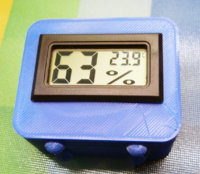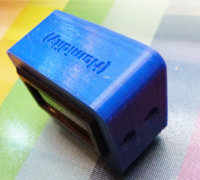- Joined
- Jan 18, 2010
- Messages
- 15,907
- Reaction score
- 8,916
- Points
- 453
- Location
- Residing in Wicklow Ireland
- Printer Model
- Canon/3D, CR-10, CR-10S, KP-3
I have done some 10 prints using the PETG with no issues, and it seems to be as stable as PLA, but with different setting.
From what I can gather, the most important thing to have right is the print speed, all my work was done at half the speed I do PLA at, I tried speeding the printer up, and the quality went out the window, so I reduced the speed back down quickly and everything went back to normal.
So, if you want to give PETG a try, then watch your print speed, I reckon that the key to good looking quality prints, remember slow is better...

 click to enlarge...
click to enlarge...
From what I can gather, the most important thing to have right is the print speed, all my work was done at half the speed I do PLA at, I tried speeding the printer up, and the quality went out the window, so I reduced the speed back down quickly and everything went back to normal.
So, if you want to give PETG a try, then watch your print speed, I reckon that the key to good looking quality prints, remember slow is better...

 click to enlarge...
click to enlarge...

 they don’t have any PTFE tubing in them, maybe ideal for this kind of filament..
they don’t have any PTFE tubing in them, maybe ideal for this kind of filament..
